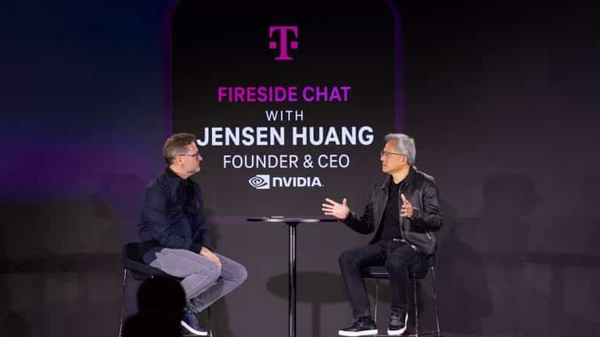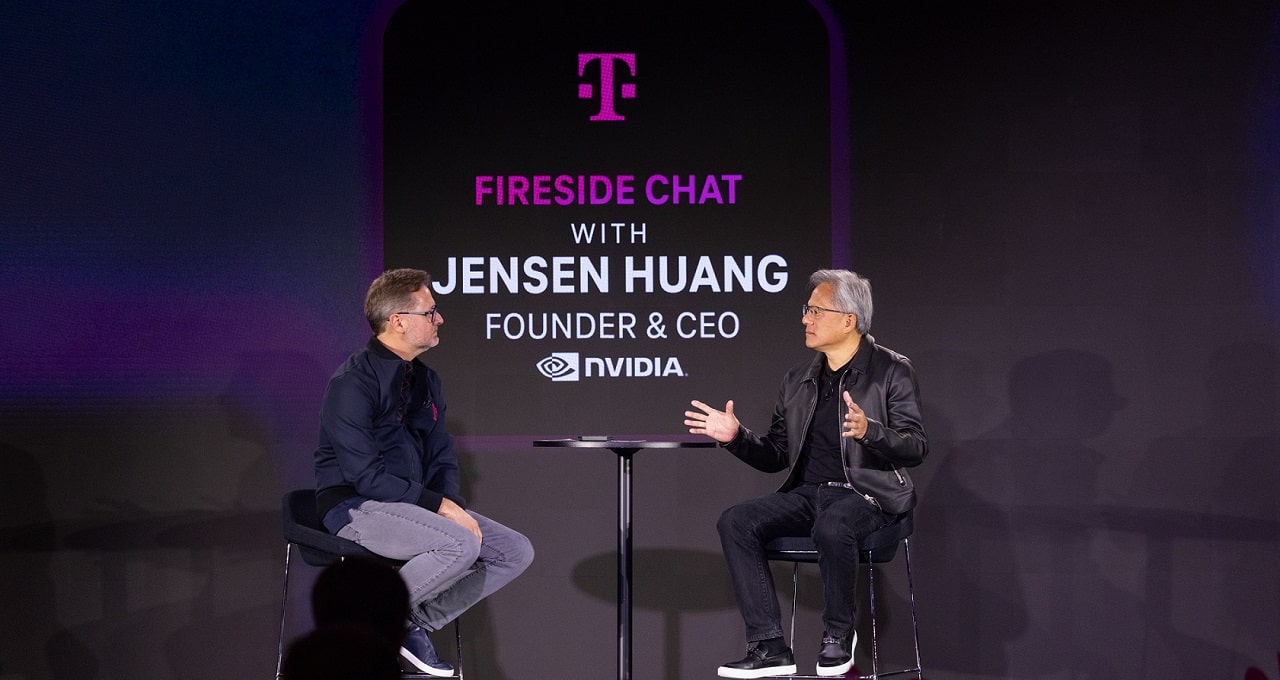
Breakthrough in Telecommunications: NVIDIA and T-Mobile Collaborate on AI Integration
In a surprising and influential appearance at T-Mobile’s Capital Markets Day, Jensen Huang, the founder and CEO of NVIDIA, presented a forward-looking vision for the telecommunications industry. His discussion with T-Mobile CEO Mike Sievert captivated an audience of press, analysts, and investors, as Huang unveiled NVIDIA’s revolutionary AI Aerial platform.
Introduction of AI Aerial Platform
NVIDIA’s AI Aerial platform aims to transform wireless networks by merging artificial intelligence (AI) with radio access networks (RAN), creating what is known as AI-RAN. This platform is designed to enhance network performance, efficiency, and generate new revenue streams. For instance, it can enable AI-computing-as-a-service during periods when network infrastructure is not fully utilized, thereby maximizing asset returns.
During their conversation, Huang stressed the significance of AI in the future of telecommunications, particularly the role of AI-RAN in optimizing and scaling network performance. By integrating radio and AI computing into a single architecture, companies can leverage AI models to optimize signal quality across various environments.
Optimizing Network Performance with AI
Huang emphasized that this integration would result in improved network efficiency and open new growth opportunities for the telecommunications sector. “We could teach these AI models how to optimize signal quality in hundreds of thousands of virtual cities,” Huang explained. This capability aligns with NVIDIA’s broader objective of embedding AI into network infrastructure, enabling telecom providers to unlock new revenue streams and deliver enhanced experiences through generative AI, robotics, and autonomous technologies.
The synergies between NVIDIA and T-Mobile are evident in their collaboration on the newly announced AI-RAN Innovation Center. Developed in partnership with T-Mobile, Ericsson, and Nokia, this center aims to accelerate the commercialization of AI-RAN technologies. Every radio operates in a unique and constantly changing environment. Deep reinforcement learning algorithms embedded in radio signal processing simplify complex computations using AI, thus delivering a customer-centric network experience.
Virtualizing RAN and Business Opportunities
Sievert highlighted how virtualizing RAN into the cloud could create new business opportunities. He explained that AI workloads would increasingly need compute power located close to the customer, utilizing underused network resources. This approach would not only optimize performance but also enhance the customer experience by providing more responsive services.
Huang also pointed out the crucial role AI will play in making networks more energy-efficient. As the demand for data and connectivity continues to grow, sustainable technology becomes increasingly important. “We have to use AI to reduce energy consumption,” Huang stated. “Everything that we accelerate, everything that we teach an AI model to do [will be] done a lot more energy efficiently.”
NVIDIA’s approach involves simulating AI models in virtual environments with accurate physics and then emulating them in the real world to maximize energy efficiency. This methodology is the foundation of the NVIDIA AI Aerial suite of platforms designed for creating, training, and deploying AI-driven cellular networks.
Implications for the Telecom Industry
The collaboration between NVIDIA and T-Mobile, along with other partners, signifies a milestone in the telecom industry’s journey towards an AI-powered future. NVIDIA AI Aerial now supports a growing ecosystem of partners, marking an essential step forward in this transformation.
For further details, you can refer to the original announcement on [NVIDIA’s blog](https://blogs.nvidia.com/blog/ai-aerial-wireless-networks/).
Conclusion
In summary, the integration of AI into telecommunications, as demonstrated by NVIDIA and T-Mobile’s collaboration, promises to revolutionize the industry. The AI Aerial platform’s ability to optimize network performance, improve efficiency, and create new revenue opportunities is a testament to the potential of AI-RAN technologies. As these innovations continue to develop, the telecom industry is poised for a future where AI plays a central role in shaping network infrastructure and customer experiences.
For more Information, Refer to this article.


































